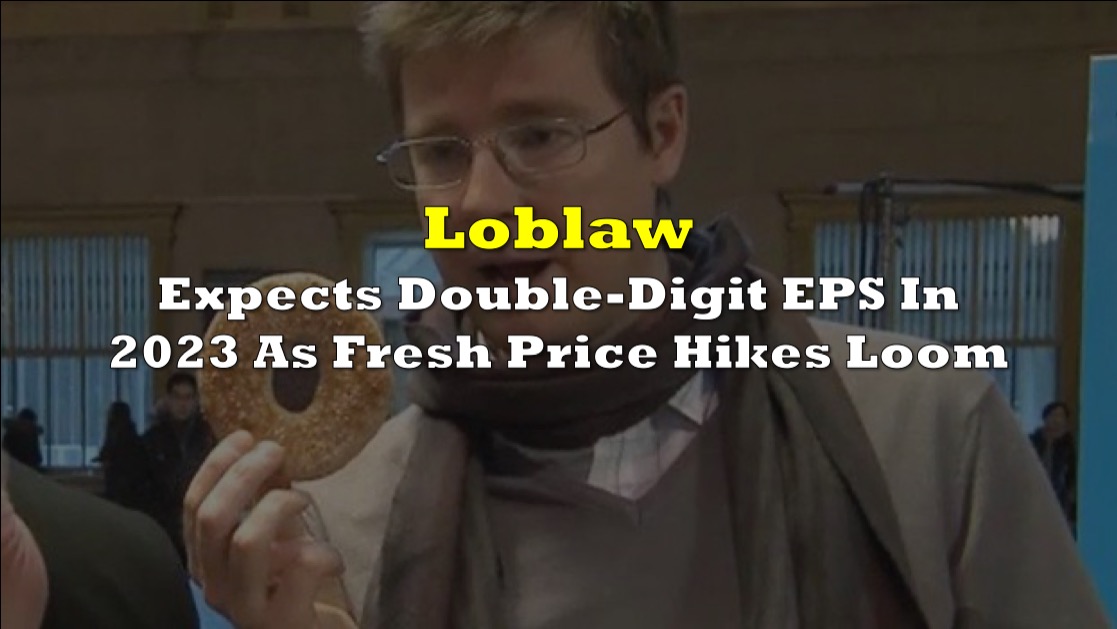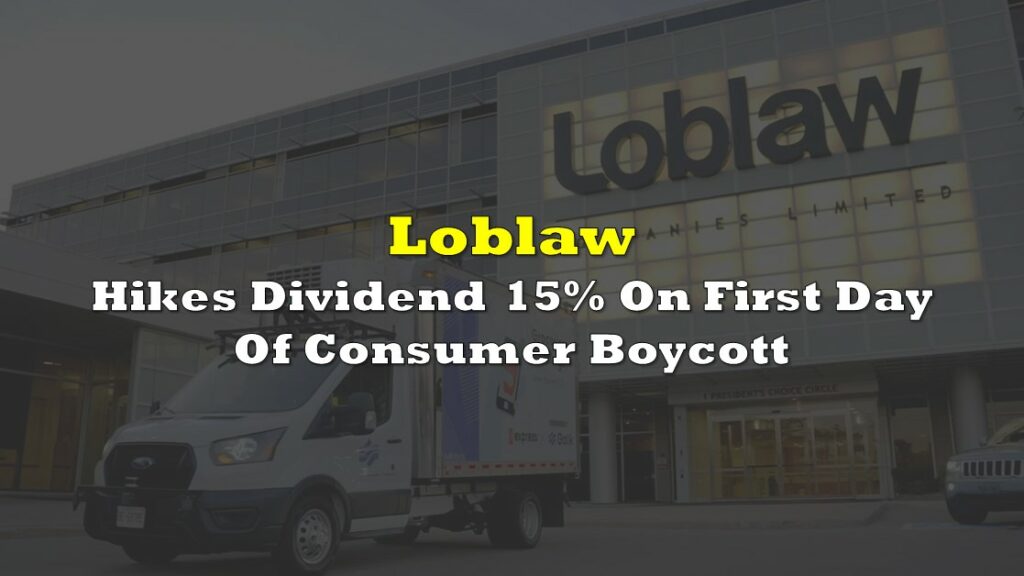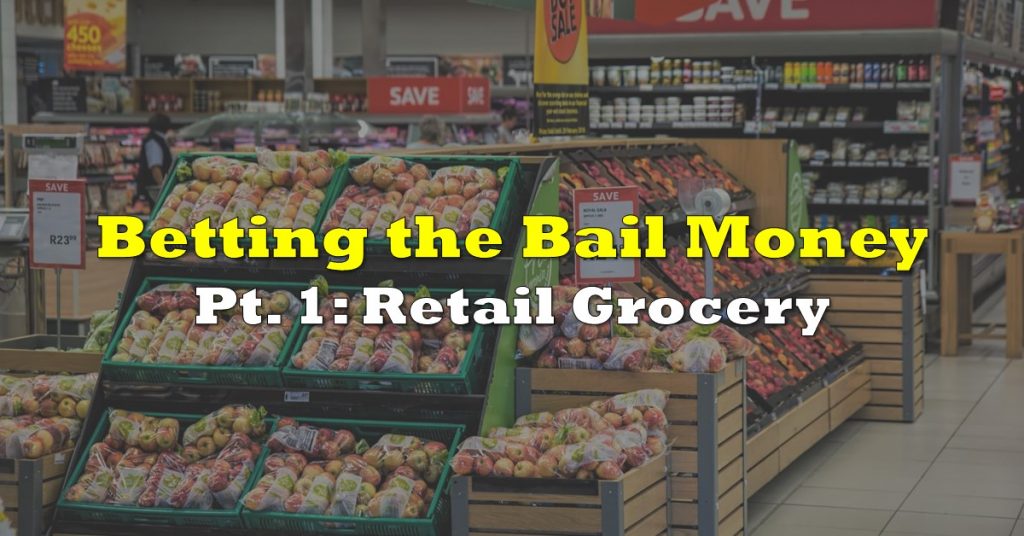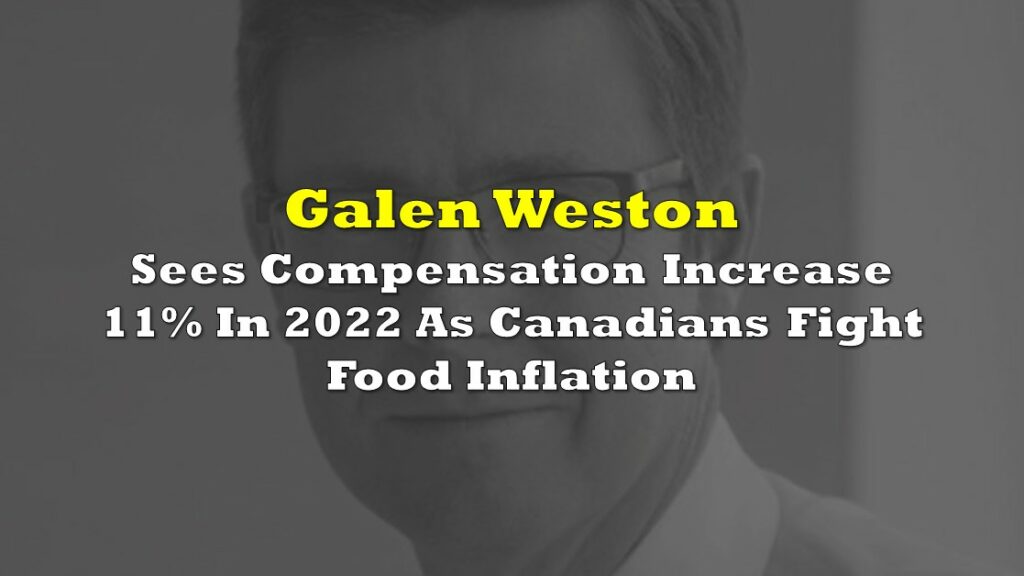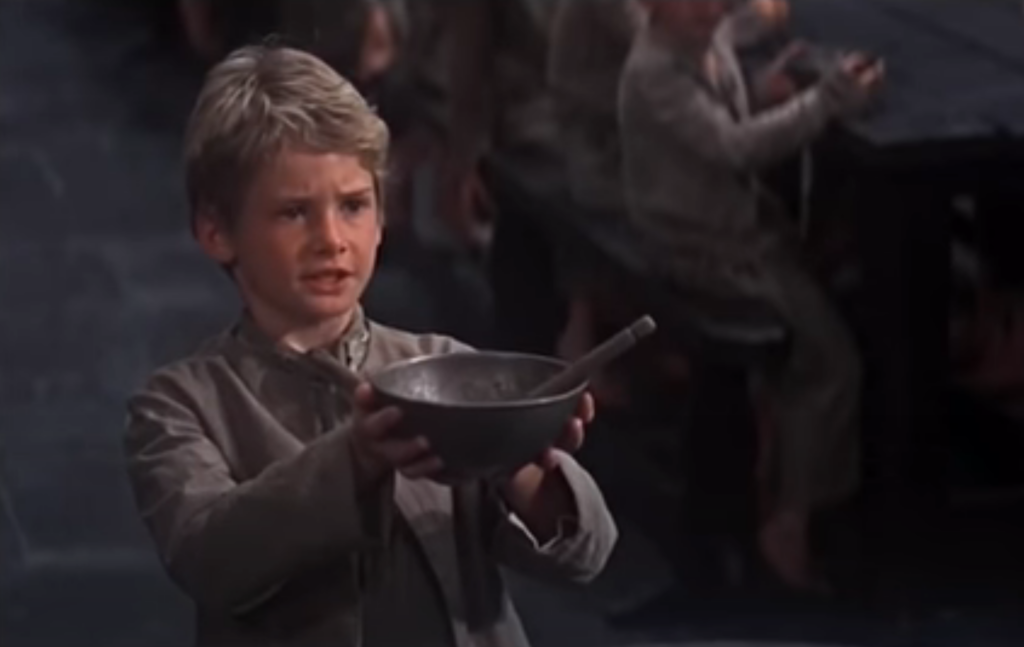Loblaw Companies (TSX: L) had stellar Q4 2022 and full-year 2022 financial results, thanks to you, dear Canadians. Despite the hawkish interest rate hikes and one of the worst cost-push inflation environments in recent memory, the nation’s largest retailer saw its quarterly revenue jump nearly 10% year-on-year, coming in at $14.0 billion at the end of the quarter.
The quarterly revenue is, however, a drop from Q3 2022’s $17.39 billion.
“Loblaw used its assets to provide value to customers in a period of continued inflation,” said President Galen Weston. “Consumers responded favourably to those efforts and continued to benefit from our extensive private label offering, leading loyalty program and targeted promotions.”
Food retail segment contributed the highest share in the revenue, recording $9.51 billion in sales compared to its last year’s contribution of $8.74 billion–almost an $800 million difference. Food Retail same-store sales grew by 8.4% from 2021, contrasting the 1.1% growth in the prior 2020 comparable period.
However, the retailer also highlighted that the Consumer Price Index for Food Purchased From Stores was 11.2%, “which was generally in line with the company’s internal food inflation.”
Critics have claimed that the corporation is profiting from inflation to boost profits, claims that are unlikely to fade as the company expects profits to outpace sales this year even as food inflation continues to rise at an alarming rate.
While gross margin was largely unchanged at 31.6% versus 31.8% in the comparable period last year, operating income increased to $871 million, or nearly 24% from last year’s $705 million.
Adjusted EBITDA, meanwhile, came in at $1.49 billion, up from $1.32 billion in the previous year.
Net earnings, however, dropped to $529 million from last year’s $744 million, mainly due to a one-time gain related to the Supreme Court’s decision on the Glenhuron Bank tax case involving Loblaw Financial Holdings. Adjusted for such and other financial calibrations, adjusted net earnings for the quarter increased to $575 million, a jump from last year’s $515 million.
For 2022, the firm’s annual revenue came in at $56.5 billion, an increase from 2021’s $53.17 billion. Gross margin also marginally increased to 31.8% from last year’s 31.5%.
Operating income jumped to $3.34 billion, up 13.8% from last year’s $2.94 billion. Adjusted EBITDA also increased to $6.18 billion from $5.59 billion in the previous year.
Net earnings for the year came in at $1.91 billion, up from 2021’s $1.86 billion. On an adjusted basis, this rises up to $2.26 billion from last year’s $1.91 billion.
Adjusted net earnings per share landed at $6.82 in 2022, a jump from 2021’s $5.59 per share. Coming from this performance, the company expects “adjusted net earnings per common share growth in the low double digits.”
“Fresh price hikes”
Despite the growth outlook, the firm noted that it’s facing fresh price hikes from suppliers, signalling food inflation won’t be easing any time soon.
“We still have over 1,000 supplier requests on our desks for significant cost increases,” Weston said during a call with analysts. “We continue to believe that these inflationary pressures are temporary and that they will ease with time, but predicting how long that will take is proving extremely challenging.”
He added: “We will continue to push back on unjustified cost increases from suppliers.”
The retailer has been earning the constant ire of consumers over its rising retail prices. This came after the chain announced a “price freeze” during Thanksgiving, seemingly as a gesture of goodwill for Canadians grappling with inflation.
Combining the expected fresh price hikes from its suppliers with company guidance to grow its bottom-line, it is anticipated that retail prices are still set to jump for Canadian consumers.
Weston meanwhile was called out by Montreal-based grocery chain rival Metro, Inc. (TSE: MRU), who said that the holiday blackout on prices is a “long-standing practice.” And this practice also isn’t done to help consumers, either, it’s basically the result of big chains refusing to negotiate with suppliers to simplify their operations — and get certainty on their margin and cost levels — before the holiday rush begins.
READ: Companies Widen Profits After Hiking Food Prices Faster Than Inflation
But Loblaws insisted that the No Name brand price freeze is “not standard,” nor something they’ve ever done before, pointing out that a holiday blackout is done to stabilize costs at a wholesale level, meaning grocers can still choose to hike at retail. The No Name price lock, they said, applies to all of the brand’s more than 1,500 products, while holiday blackouts typically do not extend to all products and categories at the store.
“Bottom line: it is not common for a grocer to commit to holding prices at any time of year — particularly on 1,500 items and the nation’s second-largest brand,” said Loblaw spokesperson Catherine Thomas.
READ: Is Loblaws’ Price Freeze On No Name Brand Just A Publicity Stunt?
The parent company of No Frills, Real Canadian Superstore, and Fortinos said that it expects profits to outpace sales in 2023 and that it expects net capital expenditures of $1.6 billion for the year, including gross capital investments of about $2.1 billion offset by $500 million in proceeds from real estate sales.
Loblaw last traded at $118.44 on the TSX.
Information for this briefing was found via Bloomberg and the sources mentioned. The author has no securities or affiliations related to this organization. Not a recommendation to buy or sell. Always do additional research and consult a professional before purchasing a security. The author holds no licenses.

